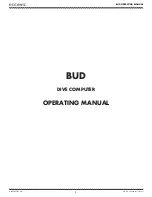
42
Subject to change without notice
NAVG(?) {i}
The NAVG command sets the number of averaging
periods if averaging was selected (see the AVGM
command) from 2 to 99.
NAVG? requests the status.
RATE(?) {i}
The RATE command sets the measuring speed to
one of the available three:
FAST (i = 0), MEDIUM (i = 1), SLOW (i = 2).
RATE? requests the status.
RNGE(?) {i}
The RNGE command sets the range and the as-
sociated source resistance manually and disables
autoranging (i = 0).
i = 1: range 1 and 25 Ω;
i = 2: range 2 and 25 Ω;
i = 3: range 3 and 400Ω;
i = 4: range 4 and 6.4 kΩ;
i = 5: range 5 and 100 kΩ;
i = 6: range 6 and 100 kΩ.
PMOD(?) {i}
The PMOD command sets the parameter of the
operation mode as follows:
i=0 :
AUTO
i=1 :
L+Q
i=2 :
L+R
i=3 :
C+D
i=4 :
C+R
i=5 :
R+Q
i=6 :
Z+
Θ
i=7 :
Y+
Θ
i=8 :
R+X
i=9 :
G+B
i=10 :
N+
Θ
i=11 :
M
PMOD? requests the status.
Please note:
Relative measurements and binning are not availa-
ble in the autoranging mode.
RNGH(?){i}
The RNGH command disables (i = 0) or enables
(i = 1) manual range selection. If manual is disabled
autoranging will be enabled.
RNGH? requests the status.
VOLT(?) {x}
The VOLT command sets the measuring voltage
to x volts, x may vary between 0.05 to 1.5 V. Any
intermediate values tried will be rounded to the
next higher (0.01 V steps) available value.
VOLT? requests the status.
MEASUREMENT CONTROL COMMANDS
PREL(?) {x}
The PREL command defi nes with x the relative
deviation of the main measurement result. This
command will generate an error message if auto-
ranging was selected. The unit of x is „Ohm“ with
R + Q, Z +
Θ
and R + X measurements, „Henry“
with L + Q, L + R and M measurements, „Farad“
with C + D, C + R and „Siemens“ with Y +
Θ
and
G + B measurements.
PREL? requests the status.
SREL(?) {x}
The SREL command sets with x the relative de-
viation of the second measurement value. This
command will generate an error message if
autoranging or M measurement were selected!
The unit of x is „Ohm“ with L + R, C + R and
R + X measurements, „Degrees“ with Z +
Θ
, Y +
Θ
and
N +
Θ
measurements. No unit is used for all
other measurements.
SREL? requests the status.
OUTP(?) {i}
The OUTP command sets the display of the main
measurement value to Normal (i = 0), to relative
deviation absolute (i = 1), to relative deviation in
percent (i = 2).
OUTP? requests the status.
OUTS(?) {i}
The OUTS command sets the display of the second
measurement value to Normal (i = 0), to relative
deviation absolute (i = 1), to relative deviation in
percent (i = 2).
OUTS? requests the status
STRT
The STRT command starts a measurement; during
the course of a measurement this command will
be ignored.
*TRG
The *TRG command is the general command con-
forming to IEEE to start a measurement, hence its
function is identical to STRT.
Listing of commands for the request of results
XALL?
The XALL? request asks for the status of the main
measurement and second measurement value
displays and the number of bins. The 3 answers
are separated by commas.
XBIN?
The XBIN? request asks for the number of bins
used for the actual measurement. If no binning
was selected or if the actual measurement was
faulty the number 99 will be sent.
XDLT?
The XDLT? request asks for the deviation between
the measurement result and the relative measure-
ment value (see also the PREL command). If the
relative measurement value is zero or if the AUTO
mode is selected an error message will be sent.
XDMT?
The XDMT? request asks for the deviation between
the measurement result and the relative measure-
ment value (see also the PREL command). If the
relative measurement value is zero or if the AUTO
mode is selected an error message will be sent.
XMAJ?
The XMAJ? request asks for the main measure-
ment result. If the measurement display is set to
percentage deviation of if the result is zero an error
message will be sent.
XMIN?
The XMIN? request asks for the second measure-
ment result. If the measurement display is set to
percentage deviation or if the result is zero an
error message will be sent.
Listing of binning commands
BCLR?
The BCLR? command erases the nominal values
and the limit values of all bins and turns the bin-
ning function off.
BING(?) (i)
The BING command enables (i = 0) or disables (i
= 1) the binning. If no bins are available or if the
C o m m a n d r e f e r e n c e



































